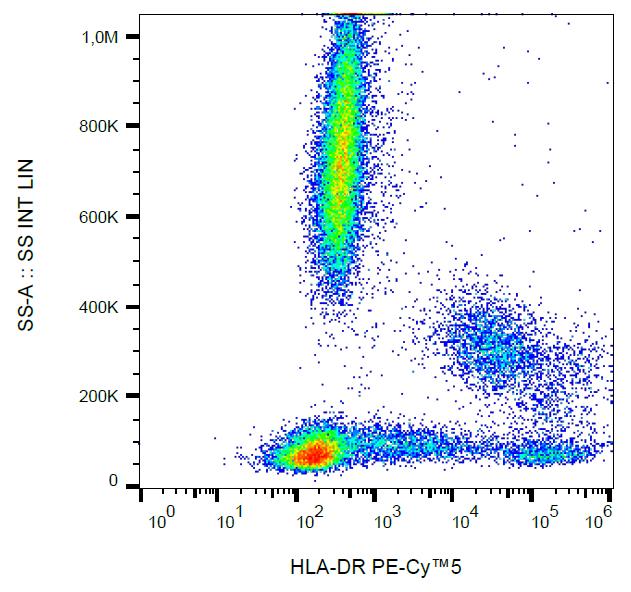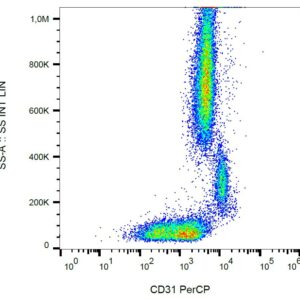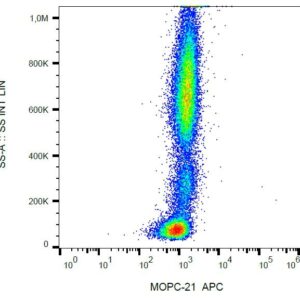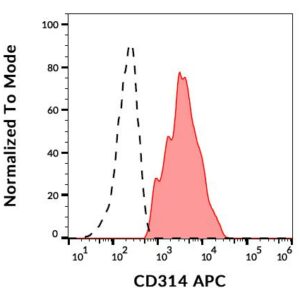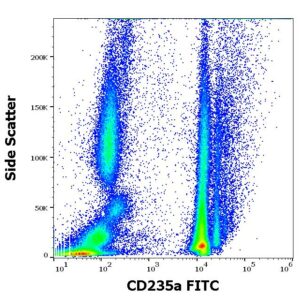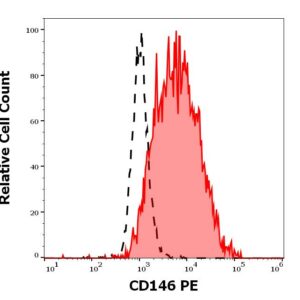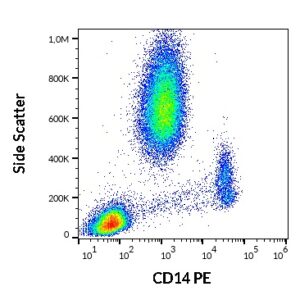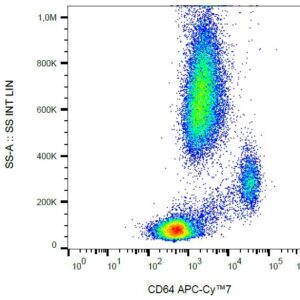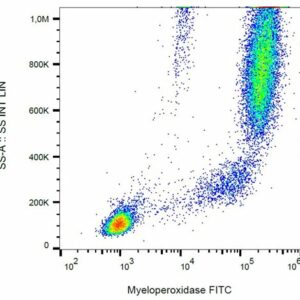
Anti-HLA-DR PE-Cy™5
Cat-no: T8-690-T100
Size: 100 tests
Antigen: HLA-DR
Clone: L243
Format: PE-Cy™5
Reactivity: Dog, Non-human primates, Human
Excitation laser: blue (488 nm)
Store at: 2-8°C. Protect from prolonged exposure to light. Do not freeze.
History and Importance of HLA-DR
HLA-DR, a major histocompatibility complex class II surface protein, is expressed on antigen-presenting cells such as macrophages, dendritic cells, and B cells. Flow cytometry experiments utilizing the HLA DR antibody have become crucial in immunology research, diagnostics, and clinical evaluations.
The Anti-HLA-DR PE-Cy™5 conjugate is a particularly powerful tool in flow cytometry due to its dual-fluorescence capability, allowing for simultaneous detection of HLA-DR and other cellular markers. This is especially useful when analyzing complex cell populations or when phenotyping specific immune subsets.
In a typical flow cytometry experiment:
- Sample Preparation: Cells are isolated from tissues or blood and suspended in a buffer.
- Staining with Anti-HLA-DR PE-Cy™5: The cell suspension is incubated with the Anti-HLA-DR PE-Cy™5 conjugated HLA DR antibody. This antibody binds specifically to HLA-DR molecules on the cell surface.
- Flow Cytometry Analysis: Cells are run through a flow cytometer, which detects and quantifies the fluorescence emitted by the PE-Cy™5 conjugate on the HLA DR antibody-bound cells.
- Data Interpretation: Using flow cytometry software, researchers can identify and quantify HLA-DR expressing cells, often delineating them from other cell populations based on the unique fluorescence of the Anti-HLA-DR PE-Cy™5 conjugate.
The HLA DR antibody, especially when conjugated with sophisticated tags like PE-Cy™5, allows for the identification of cells participating in the immune response. This becomes invaluable in clinical settings for various reasons:
- Disease Monitoring and Diagnosis: HLA-DR expression is often upregulated in inflammatory and autoimmune conditions. By detecting changes in HLA-DR expression using the HLA DR antibody, clinicians can diagnose, monitor, and assess conditions like rheumatoid arthritis, systemic lupus erythematosus, and multiple sclerosis.
- Transplantation: Monitoring HLA-DR expression can be crucial post-organ transplantation. Increased levels might indicate graft-versus-host disease or organ rejection.
- Infection: In some infections, like HIV, a decrease in HLA-DR expression on certain immune cells can be indicative of disease progression.
In summary, the Anti-HLA-DR PE-Cy™5 conjugate and the HLA DR antibody are essential instruments in flow cytometry experiments, providing detailed insights into immune cell activation and regulation. Their role in diagnosing and monitoring various diseases cements their importance in both research and clinical settings. The versatility of the HLA DR antibody, especially when combined with advanced fluorochromes like PE-Cy™5, ensures it remains a cornerstone in immunological investigations.
| Vendor | EXBIO Praha AS สาธารณรัฐเช็ก |
|---|
Related products
แอนติบอดี
แอนติบอดี
แอนติบอดี
แอนติบอดี
แอนติบอดี
แอนติบอดี
แอนติบอดี
แอนติบอดี


